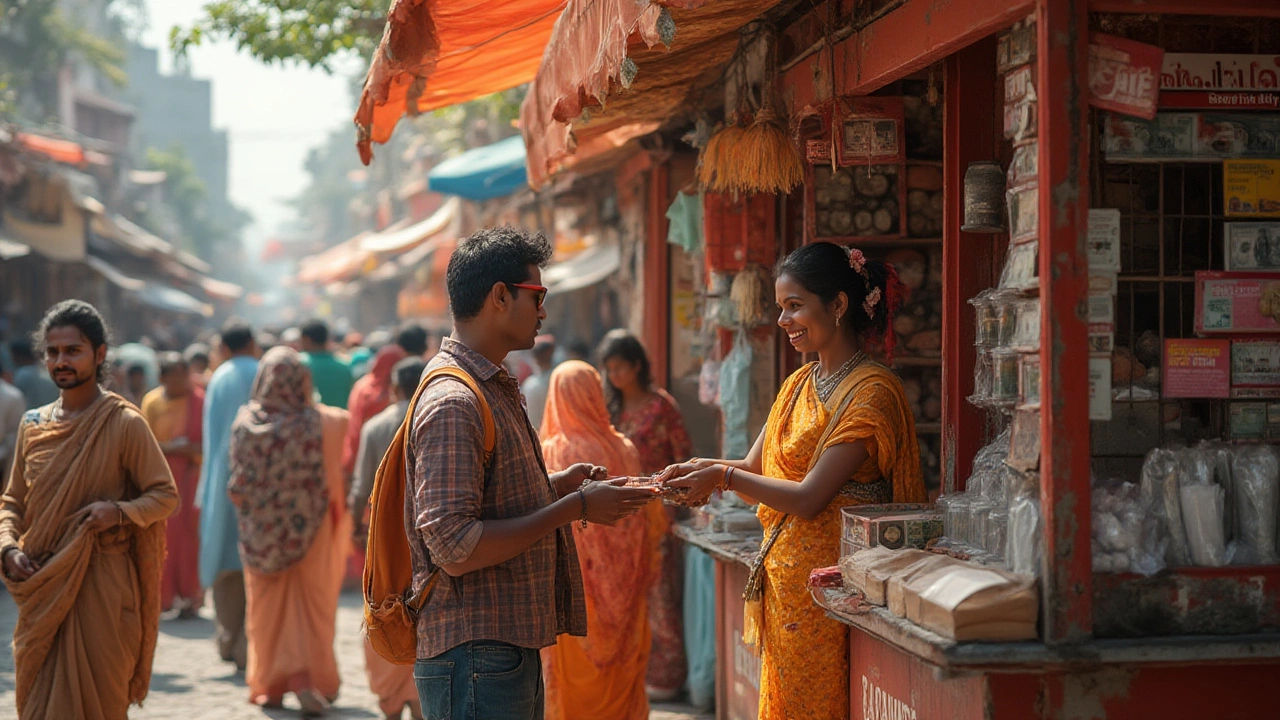
Get the latest on how much $1 US is worth in India, plus clever money tips for travelers. Learn exchange rates, where to exchange, card vs. cash, and local buying power.
When dealing with exchange rate India, the price at which the Indian rupee swaps for foreign currencies, shaping how far your money goes in the subcontinent. Also called the INR conversion rate, it directly affects everything from hotel bills to street food. Understanding it helps you avoid surprise costs and plan smarter trips.
Another key player is the Indian Rupee (INR), India’s official currency that flows through markets, banks, and ATMs across the country. Its value fluctuates daily based on global demand, oil prices, and domestic economic health. Knowing the current INR value lets you gauge whether a good deal is truly good or just a flashy price tag.
Travel budgeting in India hinges on the Reserve Bank of India (RBI), the central bank that sets monetary policy, intervenes in forex markets, and publishes official rates. When the RBI adjusts interest rates or steps into the foreign‑exchange market, the exchange rate India can shift dramatically within hours. For a backpacker buying train tickets in Delhi or a luxury traveler booking a beach resort in Goa, those shifts translate into real‑world cash flow changes.
Forex market dynamics are another related entity. The global network of banks, brokers, and traders constantly buys and sells currencies, creating the supply‑and‑demand forces that push the exchange rate India up or down. Seasonal tourism spikes, remittance inflows, and even geopolitical news feed into this market, meaning the rate you see on a travel forum might differ from the rate your credit card finally applies.
Practical tips flow from these connections. If you know the RBI is likely to tighten monetary policy after a high‑inflation report, you can expect the INR to strengthen, making foreign currency purchases cheaper. Conversely, a sudden drop in oil prices often weakens the rupee, nudging the exchange rate India higher for travelers holding dollars or euros. Monitoring these macro signs lets you choose the best moment to exchange cash or lock in rates with a travel card.
Cost‑of‑living calculations also depend on exchange rate India. A daily budget of 2,000 INR in Mumbai feels different when the dollar‑to‑rupee rate is 82 versus 75. By converting your planned expenses into your home currency using the latest rate, you get a realistic picture of total spend, avoiding budget overruns that can ruin a trip.
Technology makes real‑time tracking easier than ever. Mobile apps pull live RBI data, while many banks now offer rate alerts. Setting a notification for when the exchange rate India hits a target helps you act quickly, whether you’re planning a big purchase like a heritage tour in Rajasthan or just topping up your travel card before a night market crawl.
All these factors—INR stability, RBI moves, forex market flow, and personal budgeting—interlock to shape the exchange environment you’ll face on Indian soil. Below you’ll find curated articles that break down each piece in plain language, give you up‑to‑date numbers, and share insider tricks to stretch every rupee further. Dive in to turn the exchange rate from a confusing number into a travel advantage.

Get the latest on how much $1 US is worth in India, plus clever money tips for travelers. Learn exchange rates, where to exchange, card vs. cash, and local buying power.